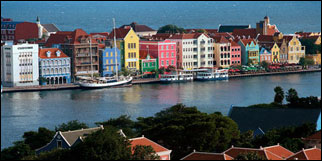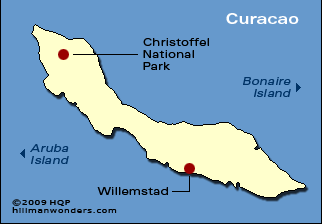curacao
 Why
Curacao
is special
Why
Curacao
is specialCuracao is best known for its plantation tours, its multi-hued Willemstad waterfront facades, and its shopping for tourists.
What Curacao lacks
Laadscape appeal
Curacao is short on gorgeous beaches. Most of the island's landscape is flat and arid, in contrast to the lush tropical shores and volcanic mountains found on many other Caribbean Islands. And, tourism plays a second fiddle to the oil refinery industry, which dominates the island's character.
On the other hand
Curacao has low-duty-free shopping, active casinos, and a photogenic Willemstad old town. This has encouraged cruise ships to make this island a port of call.
More Curacao tips & insights
Plantation tours
They explore the historic plantation houses and lands in Christoffel National Park. The full tours include an old fashioned plantation-style lunch.
Tambu
This heartfelt traditional music and dance express the suffering of the slaves.
Cuisine
Curacao's festive dish is Rijsttafel, a meal comprising up to several dozen different dishes. Rijsttafel originated in colonial times in Indonesia, made its way to Holland, and then crossed the Atlantic to Curacao.
Broad human diversity
The blood of several dozen world areas runs through the veins of the island residents.
Climate
Curacao lies below the traditional hurricane paths.
Sovereignty
Curacao is one of the "ABC" islands (referring to Aruba, Bonaire and Curacao) as well as a political part of the Netherlands Antilles, which in turn is under the umbrella of Holland.
Language
Dutch is the official language, but English and the Dutch-African linguistic amalgam Papiamento are widely spoken.
Island statistics
Curacao is 60 kilometers (37 miles) in length and 11 kilometers (7 miles) in width. It has nearly 200,000 residents and 400,000 visitors.
Location Map



